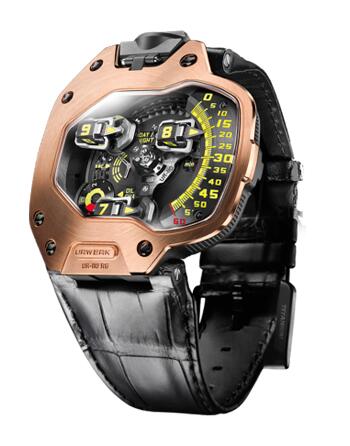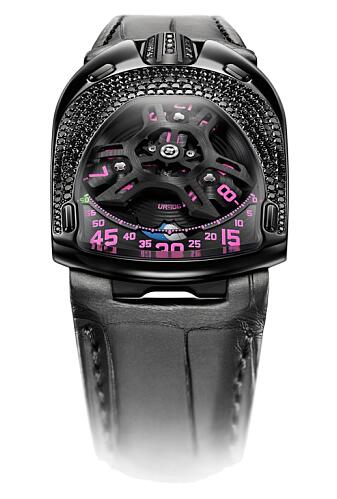Urwerk revisited its iconic roaming hour satellite.
The UR-100 SpaceTime replica may be touted as one of Urwerk’s most basic time tools to date, but it’s still far from your swamp standard three-handed. Of course, we expect nothing less than creative mavericks Felix Baumgartner and Martin Frei. As we all know, both people have a long-term interest in time and space, so these two concepts are integrated into a watch.

Urwerk’s iconic orbiting hour satellite remains in focus, but is very different. In past iterations, the minute hand with a red arrow on the hour satellite disappeared after 60 minutes and was replaced by the next one. However, in the UR-100 spacetime, the minute arrow (actually one of the three arrows) passes under and between the auxiliary dials, again showing two new astronomical indications.
The first is the distance traveled on the earth in kilometers. This indicator is evaluated by an indicator at ten o’clock based on the average speed of the Earth’s rotation axis at the equator (ie, the equivalent speed of 555 kilometers per 20 minutes). The second is the distance the earth travels around the sun, as indicated by the indicator at two o’clock. Approximately 35,740 kilometers every 20 minutes.
The UR-100 SpaceTime is powered by the automatic movement 12.01. It is tuned by Urwerk’s latest turbine, called Windfäng (“Air Trap” in Swiss German), which minimizes shock, excessive entanglement and wear. The rotor partially supported by the flat turbine on its periphery also has a larger diameter, resulting in lower mass and therefore less wear. The design and construction of the movement is particularly tricky because the gap between the three different dials and the domed sapphire crystal is very narrow.

If the striking proportions of the titanium and stainless steel cases of the UR-100 SpaceTime look familiar, it is because lead designer Frei looks at the aesthetics of the early Urwerk replica watches at what he calls the “back to the future” moment. “We broke the methodology and used some of the original design elements of early architecture,” he explained. The UR-100 case is a deconstruction of Urwerk’s early case. The steel dome of our historic model is made of sapphire crystal. It also includes practical considerations, such as the easy-to-hold groove edges along the elongated octagonal case, and the crown in the recess at 12 o’clock.
One of the translations for the “Urwerk” name is the “primitive movement” in German. Baumgartner and Frei have always said that their creation is a tribute to several generations of watchmakers, and their work has made the fine watches we know today. Appropriately, the UR-100 space-time is inspired by a 19th-century pendulum clock, which shows the distance of the Earth’s rotation at the equator, as Gustave Sandoz did at the Chicago World’s Fair 1893 of. With the human obsession with time and the close connection with time, distance, and speed, we can’t think of better disruptors to push the accepted metric.
case
41mm x 49.7mm for titanium and steel (UR-100 iron) or titanium and steel with black DLC (UR-100 black)
dial
Open turntable with three tracks
motion
Automatic movement UR 12.01
strap
Black alligator leather (UR-100 iron) or black industrial fabric (UR-100 black)
Function
Hours, minutes, 20 minutes of distance traveled on the earth’s equator, 20 minutes of distance traveled by the earth around the sun
Power reserve
48 hours